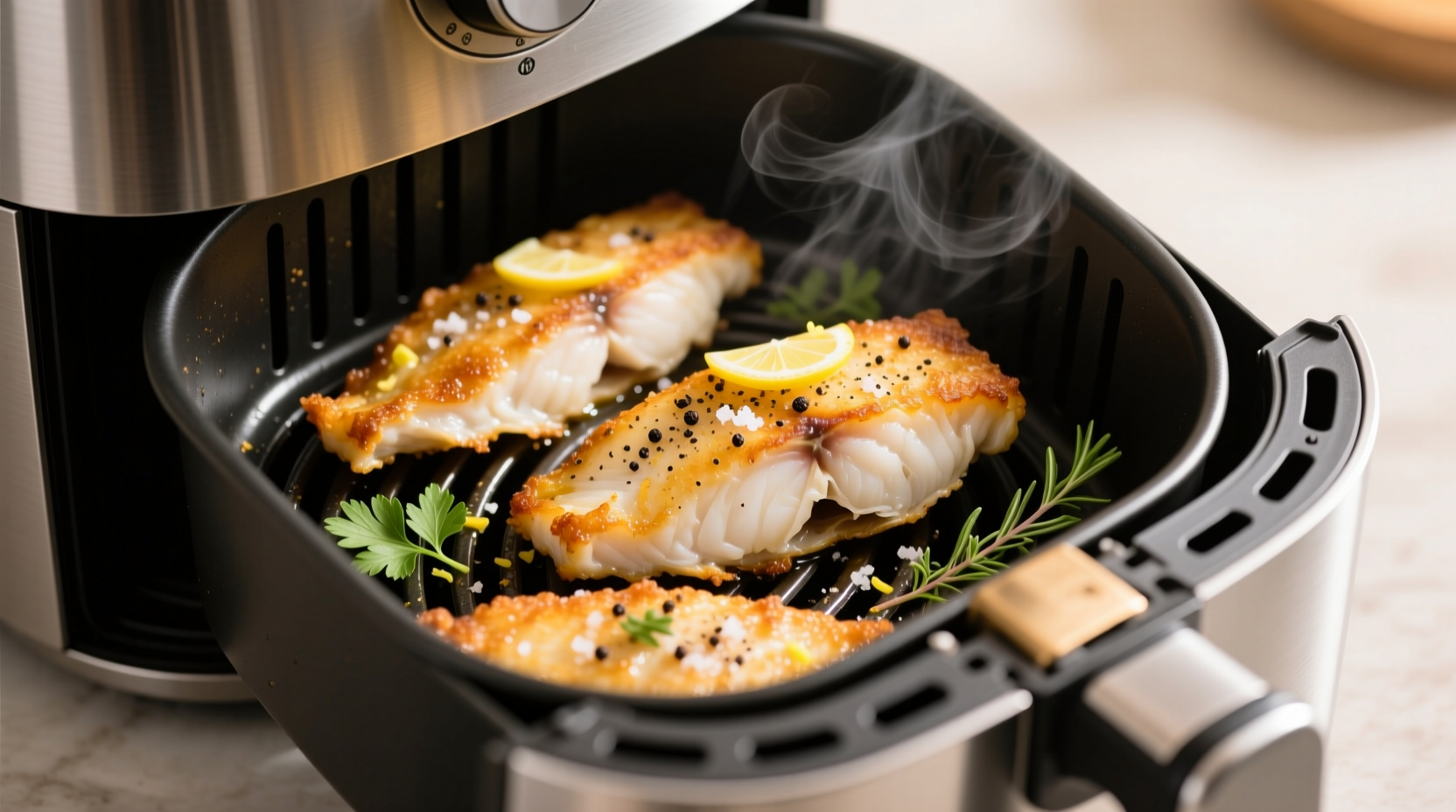The fastest way to cook tilapia in an air fryer is to season 6-ounce fillets with olive oil, salt, and pepper, then air fry at 400°F (200°C) for 8-10 minutes until the internal temperature reaches 145°F (63°C). This method produces perfectly flaky, moist fish with a light golden crust in less than 15 minutes total, making it the healthiest and most time-efficient cooking method compared to traditional frying.
Why Air Fryer Tilapia Beats Every Other Cooking Method
When you're craving a healthy, protein-packed dinner without the grease of traditional frying, your air fryer becomes the ultimate kitchen hero. Tilapia fillets transform in just minutes with that perfect balance of crisp exterior and tender interior—no soggy results or uneven cooking. Unlike pan-frying which requires constant attention, the air fryer delivers consistent results with minimal hands-on time, making it ideal for busy weeknights when you need dinner fast without compromising nutrition.

Your Step-by-Step Path to Air Fryer Tilapia Success
Preparation: Setting Up for Perfect Results
Start with properly thawed tilapia fillets—never cook frozen fish directly as this creates steam that prevents proper crisping. According to FDA food safety guidelines, the safest thawing method is transferring frozen tilapia to the refrigerator 24 hours before cooking. If you're short on time, place sealed fillets in a bowl of cold water, changing the water every 30 minutes until thawed (typically 1-2 hours).
Dry your fillets thoroughly with paper towels—this critical step removes surface moisture that would otherwise create steam instead of that desirable golden crust. Season simply: 1 teaspoon olive oil per fillet, ¼ teaspoon salt, and freshly ground black pepper. For flavor variations, try lemon zest and garlic powder or paprika and dried dill.
Cooking: The Exact Timing and Temperature Formula
Preheat your air fryer to 400°F (200°C) for 3 minutes—this ensures immediate cooking when you add the fish. Place fillets in a single layer in the basket without overlapping (cook in batches if necessary). For standard 6-ounce fillets:
| Fillet Thickness | Cooking Time | Internal Temperature |
|---|---|---|
| ½ inch (1.25 cm) | 6-8 minutes | 140°F (60°C) |
| ¾ inch (2 cm) | 8-10 minutes | 145°F (63°C) |
| 1 inch (2.5 cm) | 10-12 minutes | 145°F (63°C) |
Flip halfway through cooking for even browning. The USDA Food Safety and Inspection Service confirms fish is safe to eat when it reaches 145°F (63°C) internally or when it flakes easily with a fork. Never skip the thermometer check—tilapia cooks quickly and overcooking leads to dry, rubbery results.
Finishing Touches: Elevating Your Air Fryer Tilapia
Immediately after cooking, transfer tilapia to a plate and let rest for 2 minutes—this allows residual heat to finish cooking while keeping moisture locked in. Squeeze fresh lemon juice over the top just before serving for brightness that cuts through richness. For restaurant-quality presentation, garnish with chopped parsley and serve immediately.
Avoid These 3 Common Air Fryer Tilapia Mistakes
Even experienced home cooks make these preventable errors that compromise results:
- Overcrowding the basket - When fillets touch, they steam instead of crisp. Cook in batches with space between pieces for proper air circulation.
- Skipping preheating - Starting with a cold air fryer extends cooking time and creates uneven texture. Always preheat for 3 minutes.
- Using wet seasonings - Marinades with high liquid content create steam. Pat dry after marinating or use dry rubs for best results.
Nutritional Benefits: Why This Method Wins for Healthy Eating
Air frying preserves more nutrients while reducing fat content compared to traditional frying methods. According to USDA nutritional data, a 6-ounce tilapia fillet cooked in an air fryer contains approximately 180 calories, 35g of protein, and just 3g of total fat—compared to 280 calories and 15g of fat when pan-fried in oil. The dry heat cooking method maintains the fish's natural omega-3 fatty acids while eliminating the need for excessive added fats.
Perfect Pairings: Complete Your Air Fryer Tilapia Meal
Create a balanced plate with these quick-prep accompaniments that cook simultaneously in your air fryer:
- Asparagus - Toss with 1 tsp olive oil, salt, and pepper; air fry at 400°F for 6-8 minutes
- Cherry tomatoes - Cook at 375°F for 5 minutes until blistered
- Lemon-dill rice - Prepare while fish cooks for a complete meal in 15 minutes
Troubleshooting Guide: Fix Common Issues Immediately
Encountering problems? These quick fixes solve the most frequent air fryer tilapia challenges:
- Dry or overcooked fish: Reduce cooking time by 1-2 minutes next time and check temperature earlier
- Soggy texture: Pat fillets drier before seasoning and avoid liquid-based marinades
- Sticking to basket: Lightly coat basket with oil spray before adding fish
- Uneven cooking: Rotate basket halfway through cooking for consistent air flow
Food Safety Essentials You Must Know
Proper handling prevents foodborne illness and ensures quality results. The FDA recommends:
- Never leave cooked fish at room temperature for more than 2 hours (1 hour if above 90°F)
- Store leftovers in airtight containers in the refrigerator for up to 2 days
- Reheat to 165°F (74°C) using the air fryer at 350°F for 3-4 minutes
- Use separate cutting boards for raw fish and other ingredients
Advanced Flavor Variations Worth Trying
Once you've mastered the basic technique, experiment with these professional chef-approved variations:
- Mediterranean style: Top with olives, capers, and cherry tomatoes before the last 2 minutes of cooking
- Cajun blackened: Coat with 1 tsp Cajun seasoning and ½ tsp smoked paprika before air frying
- Lemon herb crust: Press panko breadcrumbs mixed with lemon zest and dried herbs onto fillets











 浙公网安备
33010002000092号
浙公网安备
33010002000092号 浙B2-20120091-4
浙B2-20120091-4